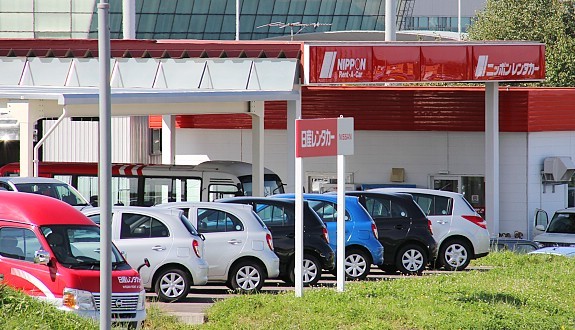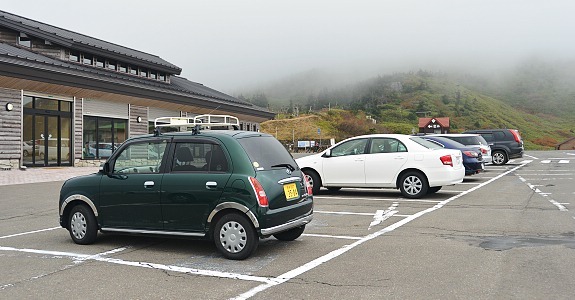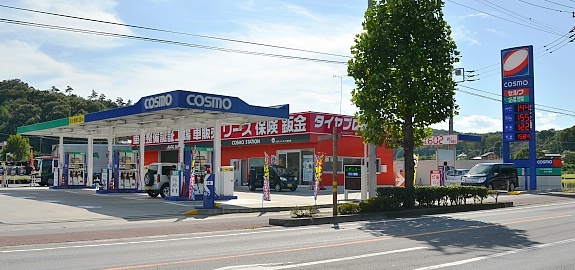
Renting a car is an option worth considering if you plan to explore rural Japan where public transportation can be both inconvenient and infrequent. A rental car can also be an economical alternative when traveling in groups or can make traveling with a lot of luggage easier.
On the other hand, a car is usually unnecessary or even burdensome for exploring Japan's big cities, where it is not recommended. Traffic in large cities tends to be heavy, orientation difficult, and parking inconvenient and expensive. Public transportation, such as trains, subways, buses and taxis are generally a better choice in metropolitan areas.
Requirements
The minimum age for driving in Japan is 18 years, and you will need a Japanese driver's license or an International Driving Permit (IDP) in order to rent and drive a car.
International driving permits are not issued in Japan and should be obtained in your home country in advance. They are usually issued through your country's national automobile association for a small fee. Foreigners can drive in Japan with a recognized international driving permit for a maximum of one year, even if the IDP is valid for a longer period. Japan only recognizes permits based on the 1949 Geneva Convention, which are issued by a large number of countries.
Belgium, France, Germany, Italy, Switzerland and Taiwan do not issue permits based on the 1949 Geneva Convention, but instead have a separate agreement that allows drivers from these countries to drive in Japan for up to one year with an official Japanese translation of their driver's license. A translation can be obtained from the Japan Automobile Federation (JAF) or the respective country's embassy or consulate in Japan.
People from other countries whose international driving permits are not recognized by Japan, must obtain aJapanese driver's license in order to drive in Japan.
 International Driving Permit alongside a Japanese driver's license
International Driving Permit alongside a Japanese driver's licenseRental Companies
Japan's leading car rental companies are Toyota Rentacar, Nippon Rentacar, Orix Rentacar, Mazda Rentacar (becomes "Times Car Rental" from April 2013), Nissan Rentacar and Ekiren. Each operates hundreds of outlets across Japan, offering cars in all sizes and, in some cases, large vans, buses and RVs. While most car rental companies do not have English reservation systems, a few of the major ones have begun to offer online English reservations systems or at least provide a phone number for reservations in English.
There are also a few English online reservation websites for foreign tourists that contract with the above rental companies. These include Japan Experience which provides an English online reservation form, English GPS with all cars and English roadside telephone support; and ToCoo! Travel which provides an English online reservation form and discount rates.
International car rental companies such as Budget, Avis and Hertz also offer car rental in Japan; however, they typically cooperate with one of the leading Japanese car rental companies rather than operating outlets themselves. As a result, their rates are not usually very competitive.

Rates
Typical rental fees are around 5000 yen per 24-hour period for a sub-compact car, 7500 yen for compact cars, 10,000 yen for mid sized cars, 15,000 yen for full sized cars and 20,000 yen for vans. Rates are sometimes increased during peak seasons, especially in Hokkaido. Many companies also offer rates for short rentals of up to 6 or 12 hours. In rare cases, fees are calculated based on calendar days (midnight to midnight) rather than 24-hour periods.
Above prices usually include unlimited mileage, taxes and a mandatory minimum insurance fee of 1000 yen per day that covers damage, injury and liability, but does not cover non-operation fees resulting from damage to the car. Cars are supposed to be returned with a full tank of gasoline, however, some outlets offer reasonable rates for re-tanking cars at the outlet. Payment can be made by credit card or sometimes by cash.
Most rental car outlets allow cars to be dropped off in a different location. If the drop-off location is relatively close, some companies will not charge any additional fee, but if the location is further away, a drop-off fee will be charged. Details depend on each company, but the fees tend to be quite high for large distances, e.g. they can be several 10,000 yen for a Tokyo car to be dropped off in Kyoto. Note that cars rented inside of Hokkaido cannot be dropped off outside of Hokkaido and vice versa.
A variety of supplemental options can be rented with your car such as child seats and snow tires, although snow tires are free of charge in snowy regions of Japan during winter.






